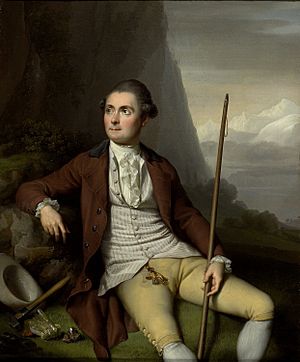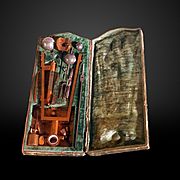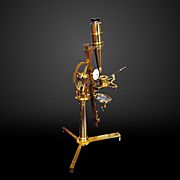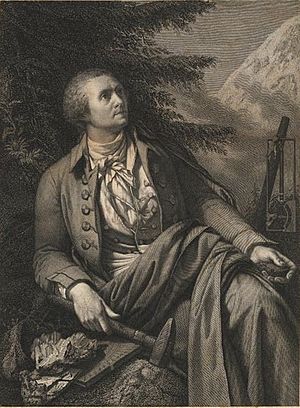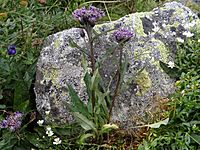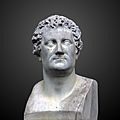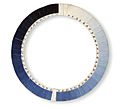Horace Bénédict de Saussure facts for kids
Horace Bénédict de Saussure (born February 17, 1740 – died January 22, 1799) was a famous scientist from Geneva. He was a geologist, meteorologist, physicist, and mountaineer. Many people call him the founder of alpinism (mountain climbing) and modern meteorology (the study of weather). He is also known for building one of the first successful solar ovens.
Contents
Life and Discoveries
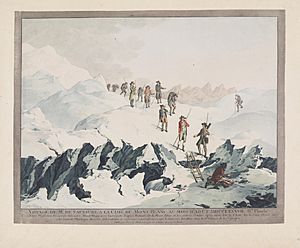
Horace Bénédict de Saussure was born on February 17, 1740, in Conches, near Geneva. At that time, Geneva was an independent republic, but today it is part of Switzerland. He passed away in Geneva on January 22, 1799.
Saussure came from an important family in Geneva. His father, Nicolas de Saussure, was a farmer and writer. Horace-Bénédict was raised by his aunt and her husband, Charles Bonnet, who was a naturalist. Bonnet helped Saussure become interested in plants and nature from a young age.
After finishing school in Geneva, Saussure completed his studies in 1759 with a paper about heat. In 1760, he started making many trips to the Chamonix Valley, at the foot of Mont Blanc. He went there to collect plants for a famous Swiss scientist named Albrecht von Haller.
In 1760, Saussure offered a reward to the first person who could reach the top of Mont Blanc. This challenge encouraged many climbers. Inspired by his uncle, Saussure also studied how plants work. He published a paper about plant leaves and petals in 1762.
That same year, when he was only 22, Saussure became a professor at the Academy of Geneva. He taught physics one year, and logic and philosophy the next. He taught there until 1786, sometimes also teaching about geography, geology, chemistry, and even astronomy.
Exploring the Alps
Saussure's early interest in plants and glaciers soon led him to explore the Alps. In 1767, he finished his first trip around Mont Blanc. This journey helped to map the snowy parts of the Alps. He also did experiments on heat, cold, air pressure, electricity, and magnetism. For these studies, he created one of the first tools to measure electricity.
He also traveled to Italy, where he studied volcanoes like Mount Etna (1772–73). He visited old volcanoes in France too.
Mountain Climbing Achievements
Starting in 1774, Saussure tried to reach the summit of Mont Blanc. He was joined by the alpine guide Jean-Laurent Jordaney. In 1776, he climbed Buet (3,096 meters). He climbed Crammont in 1774 and again in 1778. That same year, he explored the Valsorey glacier near the Great St. Bernard Pass. In 1780, he climbed Roche Michel above the Mont Cenis Pass.
In 1785, he tried to climb Mont Blanc again but did not succeed. However, two men from Chamonix, Michel-Gabriel Paccard and Jacques Balmat, reached the top in 1786. In 1787, Saussure himself made the third climb of the mountain. His achievements helped make places like Chamonix popular for tourists.
Inventions and Observations
Saussure was very interested in measuring weather. He invented and improved many tools. These included the magnetometer (for magnetism), the cyanometer (for measuring the blueness of the sky), the diaphanometer (for judging how clear the air is), the anemometer (for measuring wind speed), and the mountain eudiometer (for measuring air purity).
One of his most important inventions was a hair hygrometer. This tool measured humidity in the air. He used it for many studies on humidity, evaporation, clouds, fog, and rain.
- Instruments invented by Saussure
In 1788, Saussure spent 17 days making weather observations and measurements on the Col du Géant (3,371 meters).
In 1789, Saussure climbed the Pizzo Bianco near Macugnaga. He wanted to see the east wall of Monte Rosa. He also crossed the Theodulpass (3,322 meters) to Zermatt. He was the first traveler to visit Zermatt. On that trip, he climbed from the pass up the Klein Matterhorn (3,883 meters). In 1792, he spent three days making observations on the same pass without going down to Zermatt. He then visited the Theodulhorn (3,472 meters).
All of Saussure's observations and experiments from his seven trips to the Alps were put into four large books. They were called Voyages dans les Alpes (1779 – 1796).
Why Saussure Was Important
The Alps were very important to Saussure's studies. He believed they held the key to understanding how the Earth was formed. He studied geology in a new way. Saussure carefully looked at the layers of rocks, the types of rocks, fossils, and minerals.
Saussure knew a lot about chemistry for his time. He used this knowledge to study minerals, water, and air. His observations made him believe in the Neptunian theory. This was an idea that all rocks and minerals were formed from water. He also thought that weather conditions were very important. His work with rocks, erosion, and fossils also led him to believe that the Earth was much older than people generally thought. This helped form the basis of Darwin's Theory of Evolution.

Saussure carried barometers (to measure air pressure) and boiling-point thermometers to the tops of the highest mountains. He measured the humidity, temperature, strength of sunlight, and clarity of the air at different heights. He also studied the temperature of the Earth at different depths. He looked at the path, conditions, and temperature of streams, rivers, glaciers, lakes, and even the sea.
Saussure changed thermometers for many uses. For air temperature, he used one with a small bulb that he hung in the shade or spun around. He could turn it into an evaporimeter (to measure evaporation) by putting a wet sponge on its bulb and spinning it. For experiments in the Earth and deep water, he used large thermometers that were well-insulated. These thermometers would hold their temperature for a long time.
With these tools, Saussure showed that the water at the bottom of deep lakes stays cold all year. He also found that it takes six months for seasonal temperature changes to reach a depth of 30 feet in the Earth. He understood that having weather stations high up in the mountains was a huge advantage. Whenever he could, he arranged for measurements to be taken at different heights at the same time for as long as possible.
Saussure was very important as a geologist. Even though some of his ideas about how the Earth formed were later found to be wrong, he greatly helped the science of geology. He was one of the first to use the word "geology" in his book Voyages in 1779.
In 1767, Saussure built the first known Western solar oven. He tried several designs. He found that a well-insulated box with three layers of glass trapped the most heat. The highest temperature he reached was 230°F (110°C). He noticed that the temperature inside the box did not change much when he moved it from the top of Mt. Crammont to the plains below. This showed that the outside air temperature did not affect how well the solar oven worked.
Saussure was recognized by important science groups. In 1784, he became a member of the Royal Swedish Academy of Sciences. In 1788, he joined the Royal Society of London. In 1791, he became a member of the French Academy of Sciences in Paris.
Saussure died in 1799 in Geneva.
Recognition
A group of plants called Saussurea is named after him and his son, Nicolas-Théodore de Saussure. These plants are known for growing in very high mountain areas. The Alpine Botanical Garden Saussurea in Courmayeur, Italy, is also named after this plant genus.
His work with minerals was also honored. A mineral called Saussurite is named after him. The lunar crater Saussure on the Moon is also named in his honor.
Saussure was featured on the 20 Swiss franc banknote in Switzerland from 1979 to 1995.
Saussure's son, Nicolas-Théodore de Saussure, was a well-known expert in plant chemistry. He was also one of the first to study photosynthesis.
His daughter, Albertine Necker de Saussure, was a pioneer in helping women get an education.
His great-grandson, Ferdinand de Saussure, became a very important linguist (someone who studies language).
Trivia
The philosopher Arthur Schopenhauer once shared a story about Saussure. When Saussure was on Mont Blanc, he saw the Moon rise so big that he didn't recognize it. He was so scared that he fainted!
Images for kids
See also
 In Spanish: Horace-Bénédict de Saussure para niños
In Spanish: Horace-Bénédict de Saussure para niños


